+ intro by Lisa Kerrigan, Senior Curator of Television
Shaking up the world of TV documentary, the features department of Associated-Rediffusion was the subject of the first TV season at the National Film Theatre in 1957, entitled Captive Cinema. In this tribute to the original programme, teddy boys meet sewermen, while teenage girls go mad for new pop idols, in extracts from series including This Week and Look in on London. As original programmer Derek Prouse noted, ‘the impact is nearly always irresistible and almost shockingly true’.
Extracts from the original Captive Cinema programme notes
The films the National Film Theatre have chosen to show on December 11th are representative of programmes – many of them live and therefore lost to record – which Associated-Rediffusion have been transmitting four or five times a week for the last two years. During this period a strong ‘Features’ team has grown up in our particular programme company. It has drawn its talent from many sources. Peter Hunt and John Rhodes left the BBC when its documentary department was disbanded. Directors like Geoffrey Hughes, Michael Currer-Briggs and Peter Morley, and our capable manager Deborah Chesshire, came to us from the documentary film world. Writers like Elkan Allan, Cyril Bennett and Daniel Farson joined us from Fleet Street and Michael Ingrams came from the theatre. This mixture of skills and points of view have given our output a virility which I hope we will not lose when our techniques become more polished and a routine develops.
Since we started, the pressure of programmes has been so great that we have never had time to theorise about what we are doing. We all believe that people are interested in other people and that television commanding vast audiences and reaching the viewer in his home is the greatest medium yet invented for bringing people closer together. We believe equally strongly that we must capture the greatest audiences we can, and compete for ‘viewing figures’ with giveaway shows and dancing girls. In this we have been surprisingly successful. This Week, our current affairs magazine, is constantly in the Top Ten Programme list and serious documentaries like Our American Cousins – written and executed in three weeks during the Suez crisis – get peak figures.
We do not believe that standards need be lowered to achieve this end. A great deal of thought, however, has to be given to presentation technique in order to hold and keep the interest of people who can always switch to another channel if bored.
A certain amount of what you will see is, technically speaking, very rough. During a period of training, with the constant pressure of the programme machine, lack of shooting time, and many of the facilities film makers take for granted, the finished product is bound to be unpolished. To a certain extent this will always be the case, but a growing professional pride in techniques will make for constant improvement. I hope, however, that we will never become an ingrowing esoteric unit losing touch with the life we try to portray, and therefore, losing sight of our main objective.
Caryl Doncaster
This Week, a half-hour news magazine transmitted on Friday nights, has had the longest and most successful run of Associated-Rediffusion’s feature programmes. The treatment of each subject is necessarily fast and the coverage is world-wide. We plan a few weeks ahead on big features, a few days ahead on news features, and may film on Friday morning itself if something vital turns up. In the last case we usually have to transmit the negative.
Roughly speaking we use about three-quarters film to one quarter studio with short links to each item. We make no distinction between film and ‘live’ visual techniques and the close-up is paramount. It is interesting, in this connection, that we have been able to dispense with the conventional establishing two-shot, then single close-up technique for interviews. The convention is now accepted that we can go into close-up from the word go, relying on sound to establish relationship between two people. This technique frees a lens and sometimes a camera for other work. This is a comparatively new method for us and not evident in the ‘Report on Cyprus’ which I produced in July 1956. This was filmed in 31 days. The murder sequence simply happened while we were in another street and we rushed round to make a ‘news’ coverage which was then inserted into a feature treatment. I wrote the script ‘on the hop’ and dubbed, according to the latest news at the time, on the Friday afternoon of transmission.
We would like to be able to get much more about the world but it will be appreciated that the air fares, expenses, etc., for a film unit going abroad are heavy, no matter what the length of the story. We are steadily developing a team of political cum-technical reporters who possess, in themselves, a sufficient background to add authority to personal conviction. This will not be done quickly.
Peter Hunt
Look in on London is a series of 13 quarter-hour television films – two-and-a-bit are included in this programme – about people and the jobs they do. Each of the subjects was filmed in from four to five days, the whole series completed in just over three months. The primary aim was to be true to life and to this much had to be sacrificed. Cameraman Harry Hart had frequently to shoot under newsreel conditions – life does not wait for lining-up. Editor Bill Morton had to assemble and shape material that was diverse, diffuse and varied greatly in quality – life is outside the studio. No interviews could be rehearsed, no scripting done beyond outline – life is not predictable. This method does not lead to a polished result, but if there is captured some part of the flavour of human existence, it is justifiable and is film in the service of live television.
Michael Ingrams
Fan Fever was transmitted on the day Liberace was mobbed by thousands of fans when he arrived in London. Our 30-minute investigation into this strange phenomenon which we called ‘Fan Fever’ tried to find out what turned these fans into rioting, shrieking, clothe-ripping fanatics. What do the parents, the fan club organisers and the psychologists think about these displays of mass hysteria? We spent four days filming in and around London trying to find the answers… four days the Unit will remember for a long time!
Peter Morley
The Associated-Rediffusion collection is preserved in the BFI National Archive
With thanks to Archbuild
With thanks to
BFI colleagues Xavier Pillai, Lisa Kerrigan, Chantelle Lavel Boyea and Elinor Groom
The Associated Redifffusion season has been made possible with help from colleagues from across the BFI including the BFI National Archive; the Rights and Contracts Department, the Events Department, the Cinemas Office and the Content Remastering Team
Please note that some of the programmes in this season contain racist language, attitudes and other content that reflect the views prevalent in its time, but will likely cause offence today (as they did then). For specific content warnings, please visit bfi.org.uk/whatson
SIGHT AND SOUND
Never miss an issue with Sight and Sound, the BFI’s internationally renowned film magazine. Subscribe from just £25*
*Price based on a 6-month print subscription (UK only). More info: sightandsoundsubs.bfi.org.uk

BFI SOUTHBANK
Welcome to the home of great film and TV, with three cinemas and a studio, a world-class library, regular exhibitions and a pioneering Mediatheque with 1000s of free titles for you to explore. Browse special-edition merchandise in the BFI Shop.We're also pleased to offer you a unique new space, the BFI Riverfront – with unrivalled riverside views of Waterloo Bridge and beyond, a delicious seasonal menu, plus a stylish balcony bar for cocktails or special events. Come and enjoy a pre-cinema dinner or a drink on the balcony as the sun goes down.
BECOME A BFI MEMBER
Enjoy a great package of film benefits including priority booking at BFI Southbank and BFI Festivals. Join today at bfi.org.uk/join
BFI PLAYER
We are always open online on BFI Player where you can watch the best new, cult & classic cinema on demand. Showcasing hand-picked landmark British and independent titles, films are available to watch in three distinct ways: Subscription, Rentals & Free to view.
See something different today on player.bfi.org.uk
Join the BFI mailing list for regular programme updates. Not yet registered? Create a new account at www.bfi.org.uk/signup
Programme notes and credits compiled by Sight and Sound and the BFI Documentation Unit
Notes may be edited or abridged
Questions/comments? Contact the Programme Notes team by email

